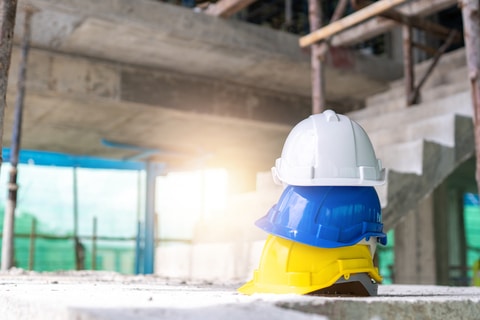Keeping Workers Alive and Healthy Is a Strategic Imperative
In the ever-evolving landscape of industrial safety, harnessing the potential of cutting-edge technologies is no longer a luxury.
It’s a strategic imperative.
According to the National Safety Council, U.S. workplace injuries cost $167 billion in 2021. OSHA counted 5,486 fatal work injuries in 2022, or 3.7 fatalities per 100,000 full-time equivalent workers.
We have to do better with workforce safety. And many companies are – trailblazing with AI-powered video and machine learning solutions. Generative AI can rapidly compose safer work instructions and other safety documentation.
The fifth part of my series on where AI reality beats AI hype concentrates on industrial safety and ergonomics. With AI and generative AI, human factors work goes well beyond warehouse safety checklists.
These tools help build a safety culture, enhance proper ergonomics and improve work conditions.
- Part I: Generative Artificial Intelligence Can Boost Your Business
- Part II: Hype Vs. Reality – AI Is Essential for Modern Warehouses
- Part III: 7 Ways AI and Generative AI Benefits E2E Supply Chains
- Part IV: Supply Chain Finance Beyond the Big Banks
- Part V: AI-Powered Innovations Transform Workplace Safety
Tracking: Decoding High-Risk Postures and Total Activity for Workforce Safety
The Challenge: Picture a bustling factory floor or a distribution center. Human movements intersect with machinery, and safety risks lurk at every turn.
Identifying high-risk postures and monitoring overall activity is akin to deciphering a complex code. Activity is too fast and furious for human viewers to catch everything.
Fortunately, most factories and warehouses already have security videos. But a person or a team would find it near impossible to review all the footage the typical jobsite produces. That process is time-consuming, prone to errors and limited in scope.
This is where AI-powered computer vision and deep learning kick in. These tools sift through the data to find potential safety problems.
- Computer Vision: Computer vision analyzes video feeds from existing cameras, employing sophisticated algorithms. These digital sentinels detect behavioral patterns — whether it’s a worker bending, lifting, twisting or jumping over a conveyor. (Yes, that’s a human factors risk that I have seen these systems identify!)
- Deep Learning: Deep learning models learn from historical data, recognizing specific movements associated with high-risk postures. Real-time alerts kick in when risky behavior surfaces.
- Alerts and Precautions: Ideally, you should choose an AI-powered system that alerts employees or management after detecting risky behavior. This allows immediate corrections to reduce workforce accidents.
The benefits include proactive safety measures, data-driven insights, fewer workplace injuries and deaths, and reduced workers’ compensation claims.
Fine-Grained Analysis: Unleashing Body Pose Estimation for Stress Reduction
The Challenge: Beyond counting postures lies the deeper quest of understanding the mechanics of stress on the human body during work tasks. Artificial intelligence platforms dive into the minutiae with body pose estimation.
- Joint Angles: AI algorithms estimate joint angles during various tasks. When a worker lifts a heavy load, the system calculates stress on their back, shoulders and knees.
- Engineering Solutions: Armed with this data, companies can systematically engineer stress out of specific tasks. This could include adjusting workstations, modifying tools or providing targeted ergonomic training.
The benefits here include precision safety, reduced strain and an increase in productivity.
- Precision Safety: Instead of generic guidelines, your company can tailor safety measures to specific tasks and individual needs.
- Reduced Strain: Improving work processes minimizes strain on workers’ bodies, leading to fewer injuries.
- Productivity Boost: Safer work environments translate to better productivity and employee satisfaction.
Generative AI: Enhance Your Safety Documentation
Believe me, warehouses and factories require a lot of safety documentation. And it takes time, money and effort to generate from scratch hazardous communications programs, emergency action plans, safety manuals and more.
Generative AI can do creditable first drafts of safety documentation. It can tailor manuals for distinct roles and even translate them into different languages.
Generative AI can create customized training materials based on activity, machinery and risks. It can develop interactive modules, quizzes and simulations for engaging and memorable training.
Of course, experienced personnel should review all safety documentation for accuracy. In one case, a Florida radio host is suing ChatGPT for defamation. The lawsuit claims the world’s most famous chatbot hallucinated claims that the host had committed financial crimes.
You don’t want such problems with your safety documentation.
Harness AI for Safer Workplaces – Prioritize People First
Tired of tripping hazards? Do you want your warehouse workers and factory workers properly trained? Want to avoid that $167 billion cost of work injuries cited above?
Then get on board with AI-powered video and machine learning solutions. And train your ergonomic and human factors experts on how to deploy generative AI to help with safety documentation.
Revolutionize workplace safety, mitigate risks, keep your workers healthy and improve productivity.
Remember, our most valuable asset isn’t machinery or algorithms — it’s the people who power our industries. And if they’re hurt, they can’t work.
Safety isn’t just a checkbox; it’s the heartbeat of progress. Let’s keep that heartbeat strong.
Related Reading
- AI for Warehousing – not Just for ChatGPT Anymore!
- The AI Industrial Revolution Will Be Just Fine
- Leaders Must Pick the Right Generative AI Wave
- Safe Workplaces Rarely Make Headlines
Jim Tompkins, Chairman and founder of Tompkins Ventures and Tompkins Solutions, is an international authority on designing and implementing end-to-end supply chains. Over five decades, he has designed countless industrial facilities and supply chain solutions, enhancing the growth of numerous companies. Jim earned his B.S., M.S. and Ph.D. in Industrial Engineering from Purdue University.

